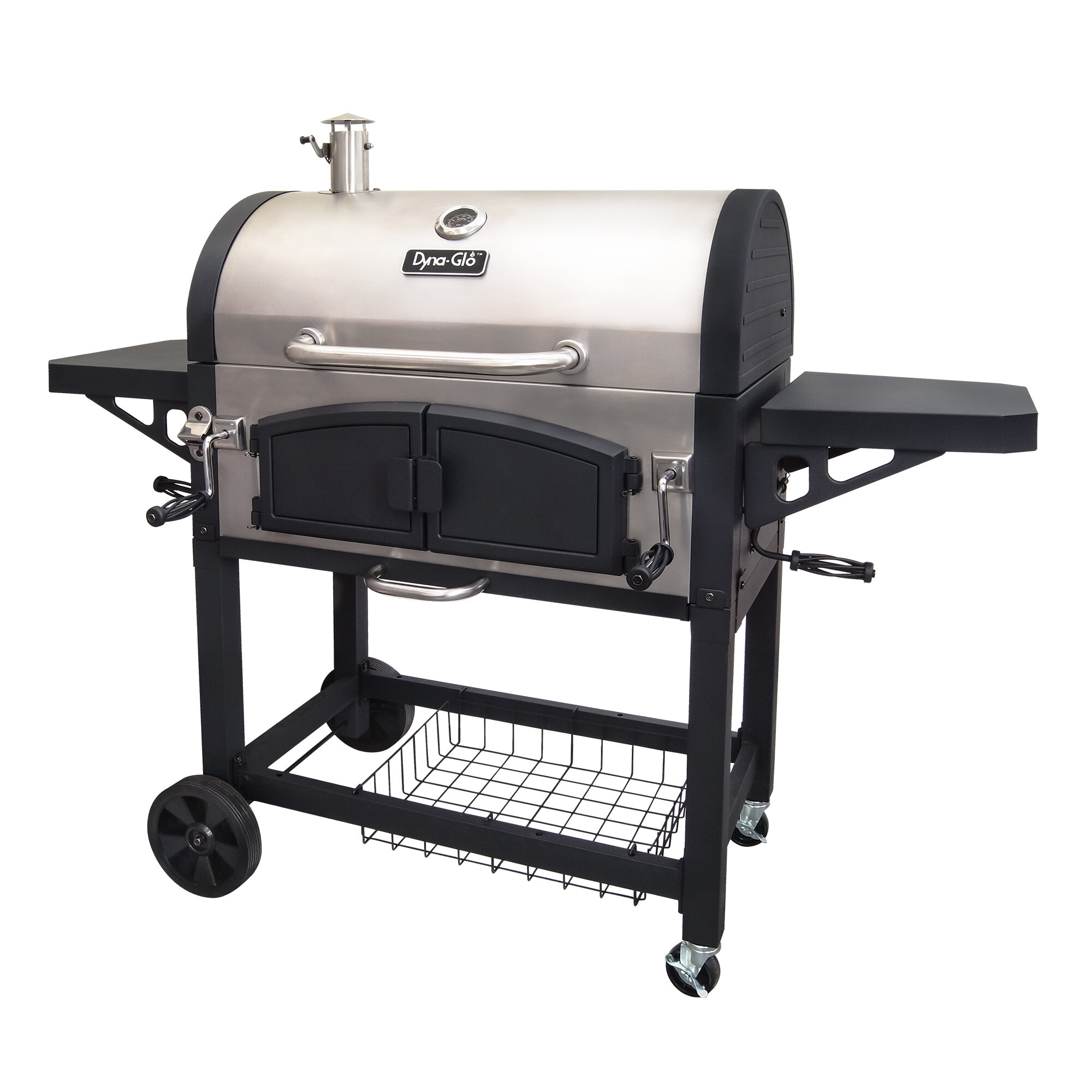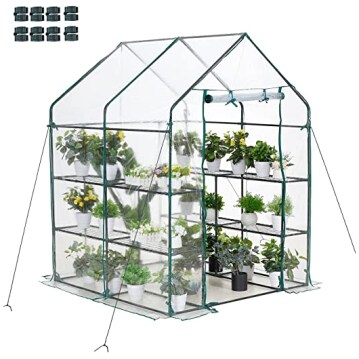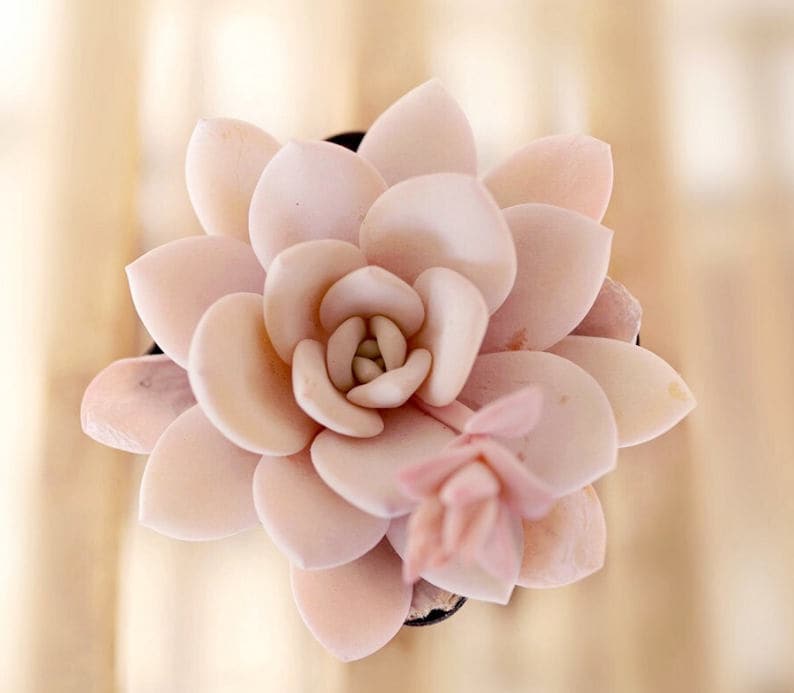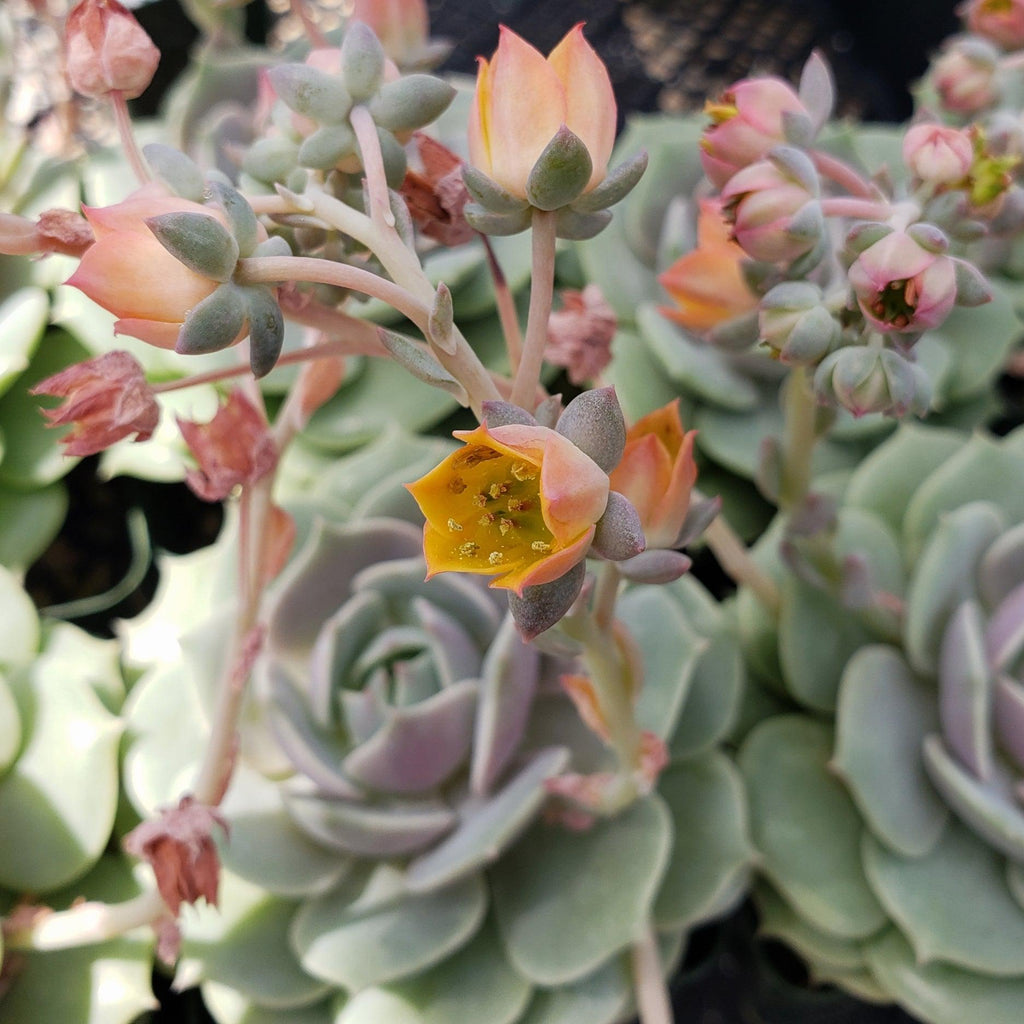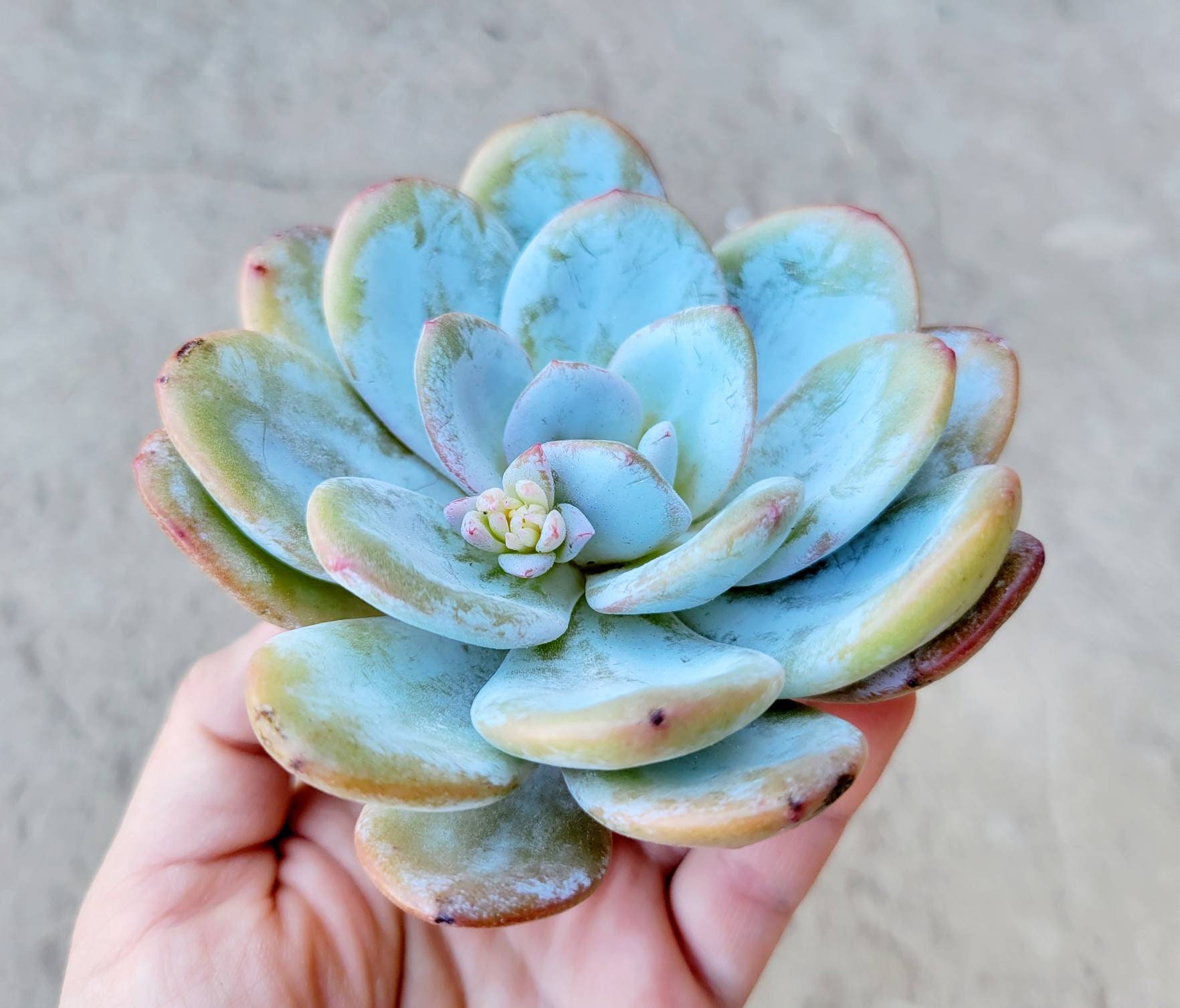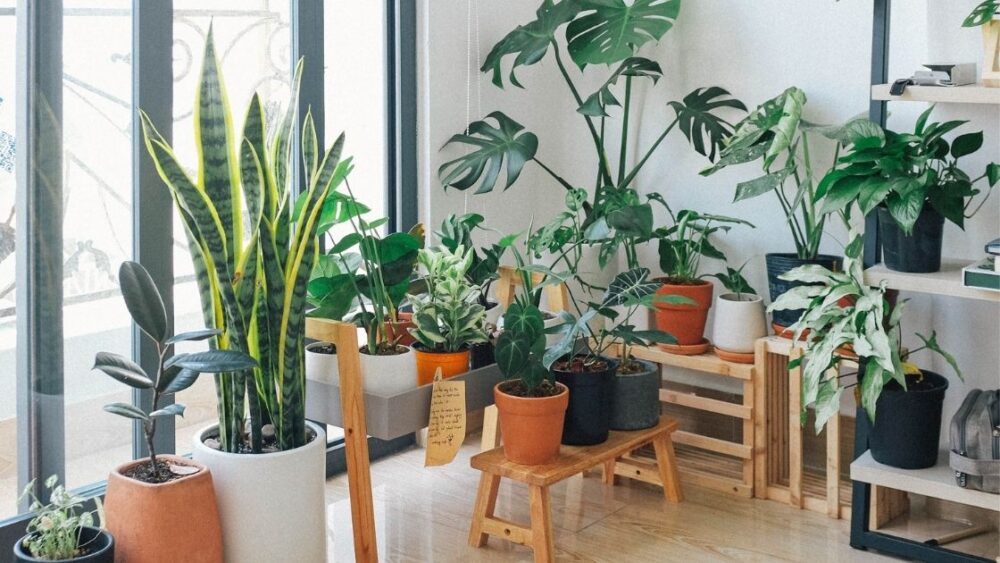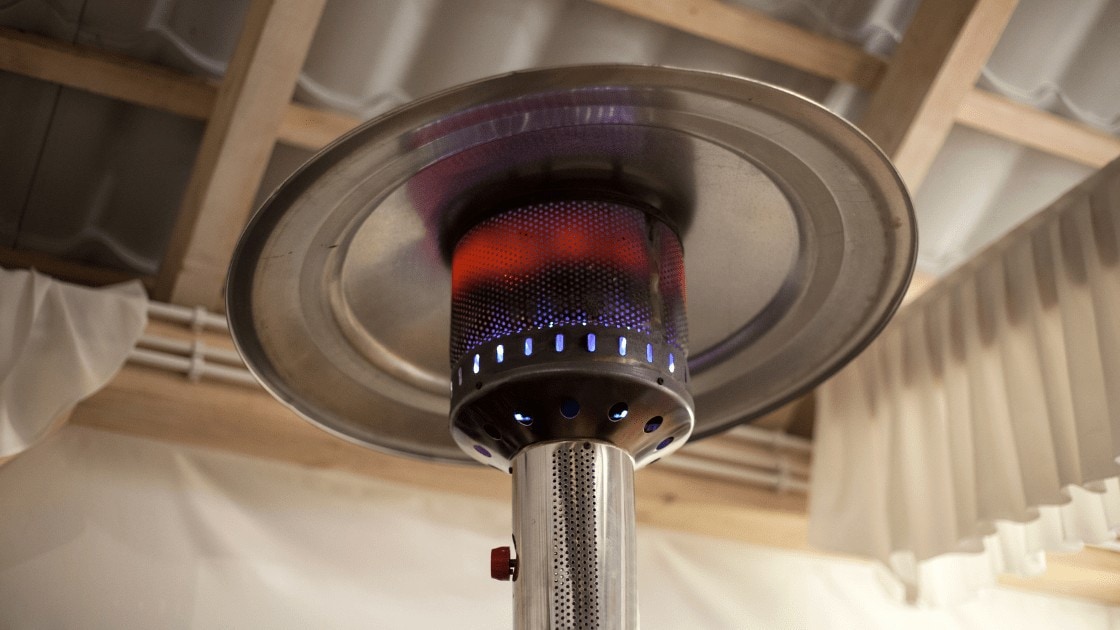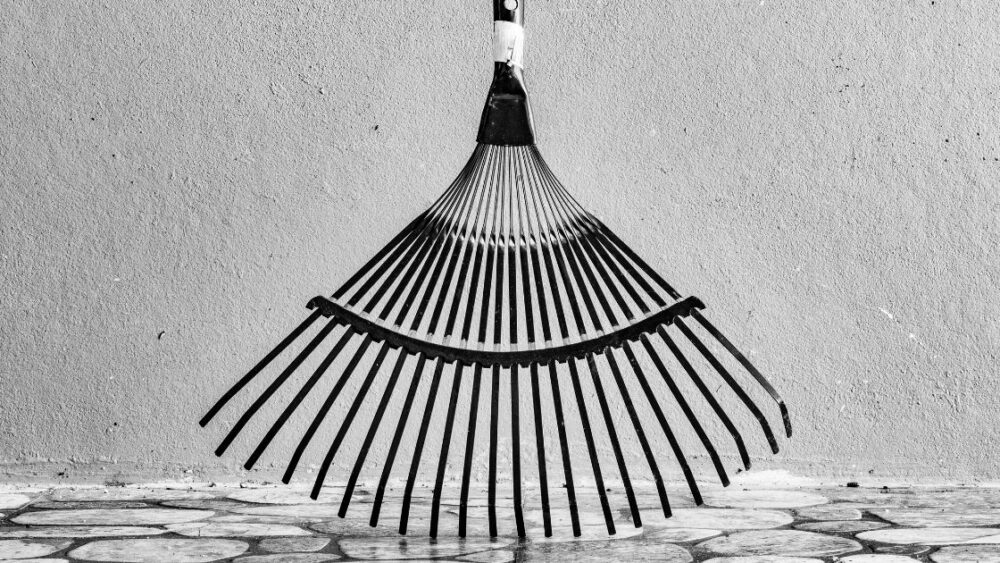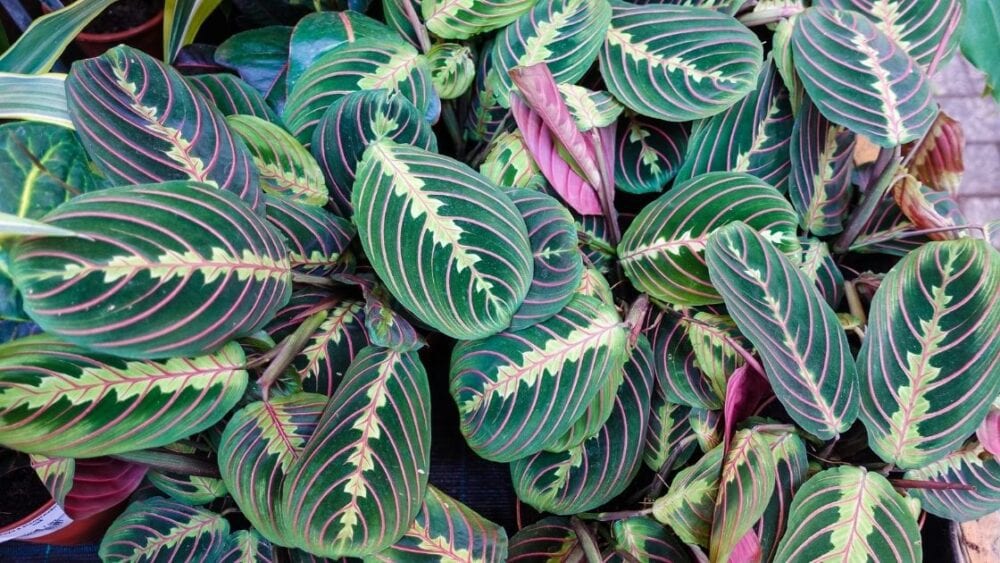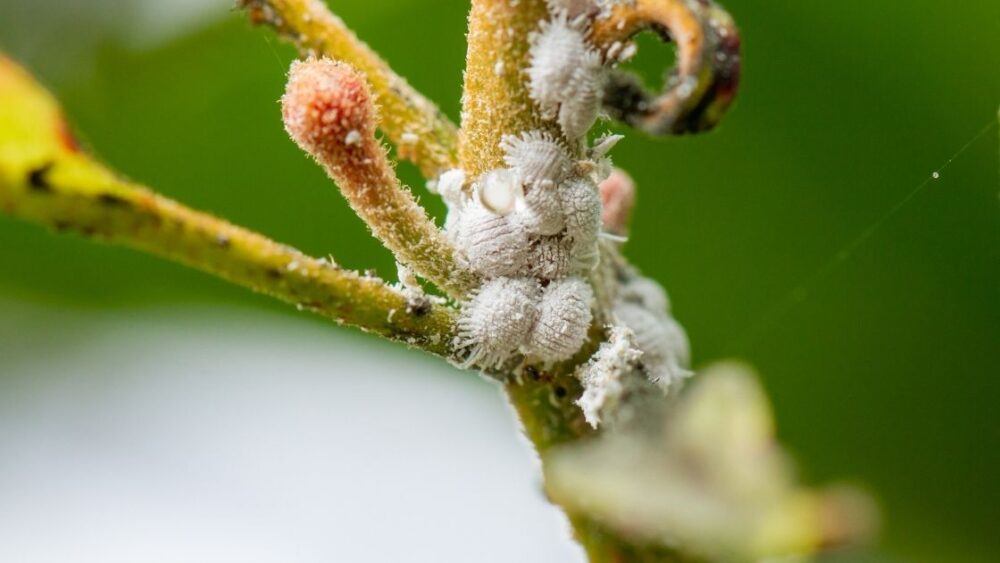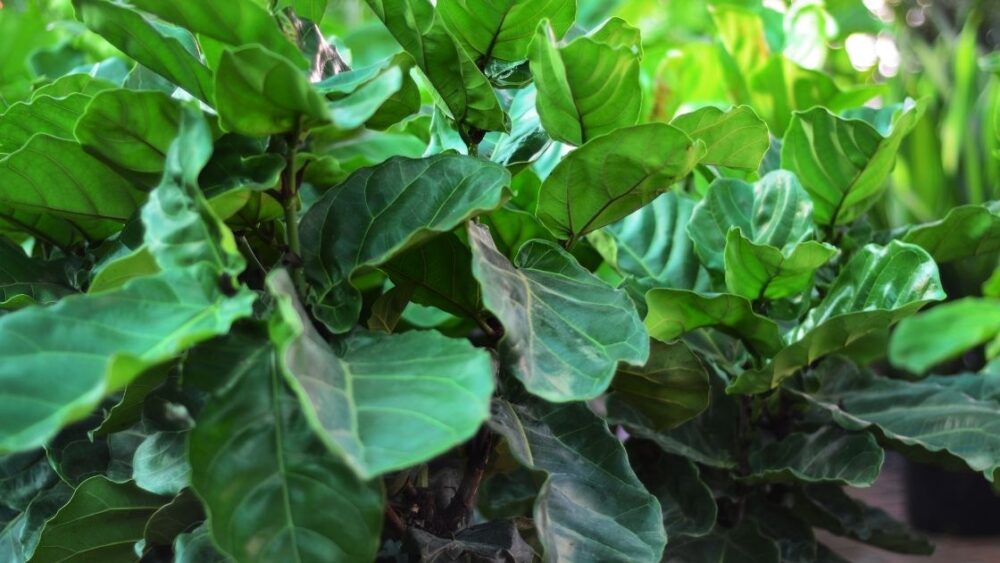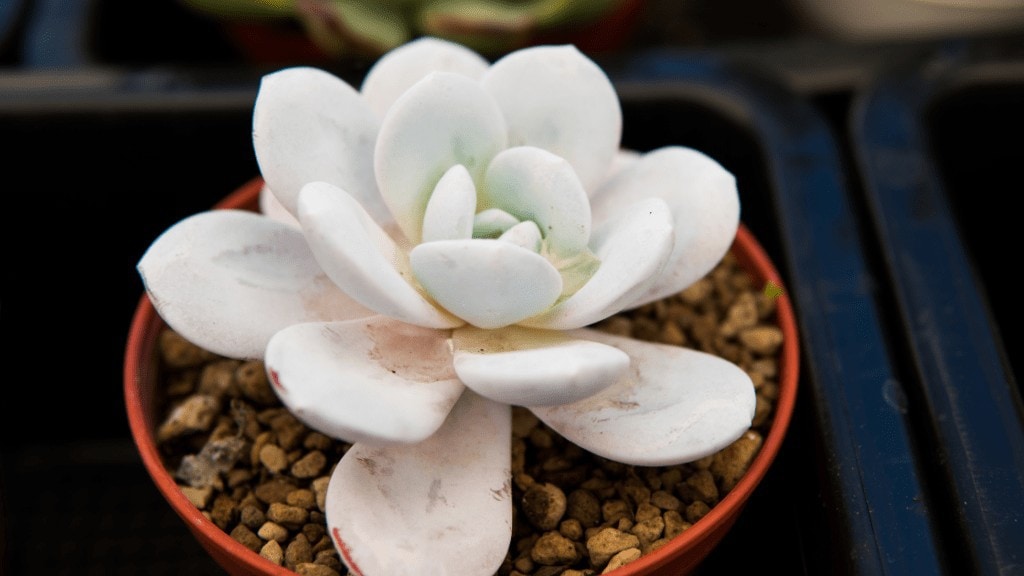
Echeveria laui is a compact plant that is very popular among succulent lovers. It has a very pleasing, smooth leaf texture and when given sufficient light, the leaves develop a beautiful pink tinge along the edges. It’s also one of the most readily flowering succulents and with proper care it will flower multiple times per year. It’s easy to grow and is not demanding – as long as you give it sufficient light intensity and avoid overwatering, you are unlikely to run into any problems.
Echeveria Laui – Description and Origin
Echeveria laui is a member of the Echeveria genus, which contains about 150 species. All plants in the genus are rosette-forming and compact, with thick, pale green leaves that develop a pink tinge around the edges.
Echeverias are polycarpic, which means that unlike most succulents, they will readily flower throughout the whole year and don’t have a set, seasonal flowering period. The flowers of the plant are very attractive, numerous and they open and close in a sequence which lasts up to two weeks for the whole cycle. The plant grows in Oaxaca, Mexico, at an elevation of around 5,000 ft, where the summer temperatures are relatively low.
Browse our Affiliate Products
To continue reading on Echeveria, check out our article on Morning Beauty’s. Echeveria Subsessilis: Morning Beauty Succulent Care Guide
How Fast Does Echeveria Laui Grow and How Big Does It Get?
The rosette of Echeveria laui reaches about 5 inches in diameter. Unfortunately, this is a very slow-growing plant. This is partly because it utilizes CAM (Crassulacean acid metabolism) photosynthesis, but also because it directs a large part of its energy towards flowering and not towards leaf development.
There is little you can do to speed up the growth of this plant and fertilization is definitely not a magic bullet. In typical growing conditions, a young plant may take 3 to 5 years for its rosette to reach 5 inches in diameter. If given very strong light and fertilized property, this period can certainly be shortened up to two-fold.
Echeveria Laui Care and Propagation
Echeveria laui has similar care requirements to other plants belonging to the Echeveria genus, which in turn have similar requirements to all other succulents. Plenty of sunlight and infrequent watering are the most important growth requirements, both of which are easy to provide.
Most succulents get killed by people giving them too much attention and watering/fertilizing them too much. Echeveria laui is not an exception – it thrives on neglect.
Do They Do Better Indoors Or Outdoors?
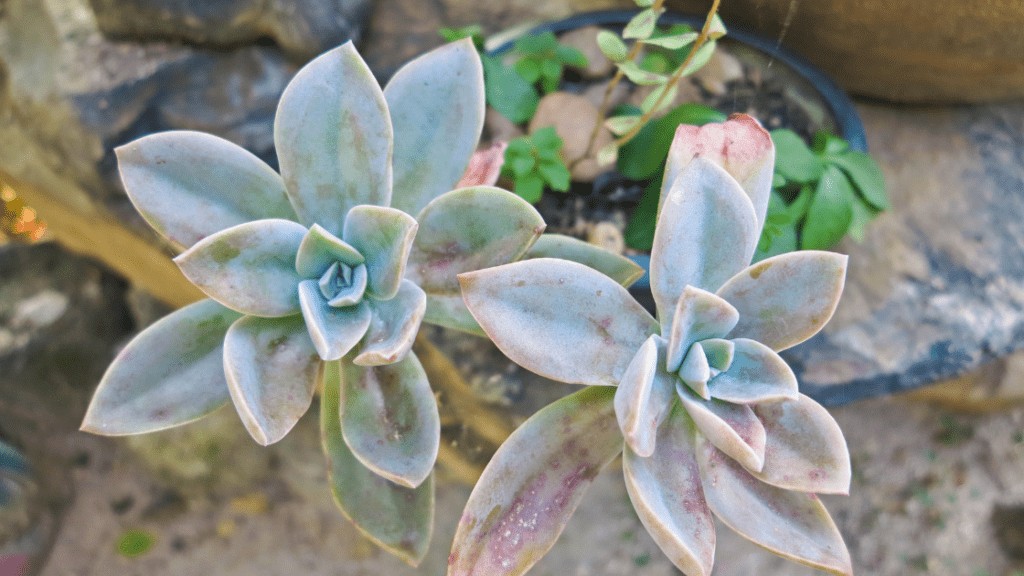
This succulent does very well outdoors, but it has to be acclimatized to direct sunlight.
If the plant is used to growing indoors, placing it in direct sunlight may stress it. Usually, the tips of the leaves will start to ‘burn’, the whole rosette will become soft and dehydrated and leaf spots will appear.
By gradually exposing the plant to full sunlight, it will get used to it. This usually takes 2-3 months, during which period the plant develops deeper roots that can keep up with the increased water demand. The plant isn’t hardy and won’t survive winter unless you live above USDA zone 9
To find a wide variety of succulents, Check out our affiliates below.
How Much Sun Do They Need And Does Artificial Lighting Work Well?
Echeveria laui needs high light intensities in order to grow and flower. As we already mentioned, the plant does well in direct sunlight, but you have to watch out for any symptoms of heat stress.
If your plant is not yet used to the direct sun, it’s best to provide some light shading or place the plant in natural partial shade. Artificial LED lights work very well for this succulent, because it has a nice, compact, circular rosette. This makes it easy to position the ‘spotlight’ of small, 9-watt LED lights so that most of the light energy is captured by the plant. Because of the small area of the rosette, low-power LED lights can easily match the power of direct sunlight, with the added benefit of not heating up the plant too much.
A 5-inch diameter rosette positioned to ‘capture’ most of the light from a 9-watt LED bulb will lead to a light intensity of around 80,000 lux – close to the intensity of direct sunlight.
What Type Of Soil Works Best?
This succulent grows well in a light, well-draining soil. General purpose cactus potting mixes work well.
Echeveria has similar pH requirements to other succulents – around pH 6.0, which is slightly acidic. Commercial cactus potting mixes already have a pH similar to that, so this is not something you need to worry about.
Is Fertilization Necessary?
Echeveria laui does benefit from fertilization, but it won’t speed up its growth.
However, lack of nutrition in the soil can certainly stunt it. If the plant has been newly repotted, don’t fertilize at all for at least 3 months. It’s best to use a highly diluted (3-4 times the recommended concentration) cactus fertilizer and alternate between fertilizer and plain water to prevent salt buildup. Watch out for any signs of fertilizer burn and leaf spots and if you suspect you’ve over-fertilized, perform a flush with clean water.
How Often Should You Water?
Watering once a month usually works well, but the actual optimum frequency depends on the size of your plant, the volume of the pot and the atmospheric conditions.
Make sure to water generously and fully soak the soil – this simulates the strong, but infrequent rains which this plant encounters in its natural habitat. Never water if the top of the soil is still moist from the previous watering. It’s best to avoid wetting the leaves of the plant – this does occur naturally as it rains, but in household conditions, it can make the plant susceptible to pests and diseases.
Temperature Tolerance And What To Do In The Winter
The plant does have a winter dormancy period, but its dormancy doesn’t lead to any obvious changes you may notice. Echeveria laui may also go into a summer dormancy if stressed by too much heat.
This is characterized by slow growth and absence of flowering. This succulent likes colder temperatures of around 68F (20C), but tolerates mid-day heat of about 85F (29C) without much problems.
Those temperatures can be difficult to achieve during the summer in high zones, which is part of the reason why this plant does so well with artificial indoor lighting. During the winter, it’s best to leave the plant on a colder windowsill that still receives plenty of indirect sunlight.
Propagation
Propagating Echeveria laui is easy but it’s not quick. Because the plant is a prolific bloomer, seeds are widely available and are not expensive.
Etsy provides offers a great selection of seeds of the Echeveria variety. check them out here.
However, leaf cuttings are the most commonly used propagation method. Like is the case with most rosette-forming plants, the part of the leaves that attaches to the stem is rich in undifferentiated cells, ready to start developing into tiny plantlets.
This happens on its own after the leaves are cut or pulled and left on top of soil. Tiny plantlets can emerge from leaf cuttings even without soil, if the leaves are placed in a ziploc bag that is left partially open to maintain a humidity of around 60-70%.
When Does Echeveria Laui Bloom?
Echeveria laui isn’t very sensitive to the length of day or the season of the year – this is a quality that is universal in all plants that belong to the Echeveria genus.
This means that the plant will bloom as soon as it senses that it has accumulated a large reserve of sugars and amino acids, regardless of what season it is. The higher light intensity you can provide, the more frequently the plant will bloom.
Should You Do Anything When It Blooms?
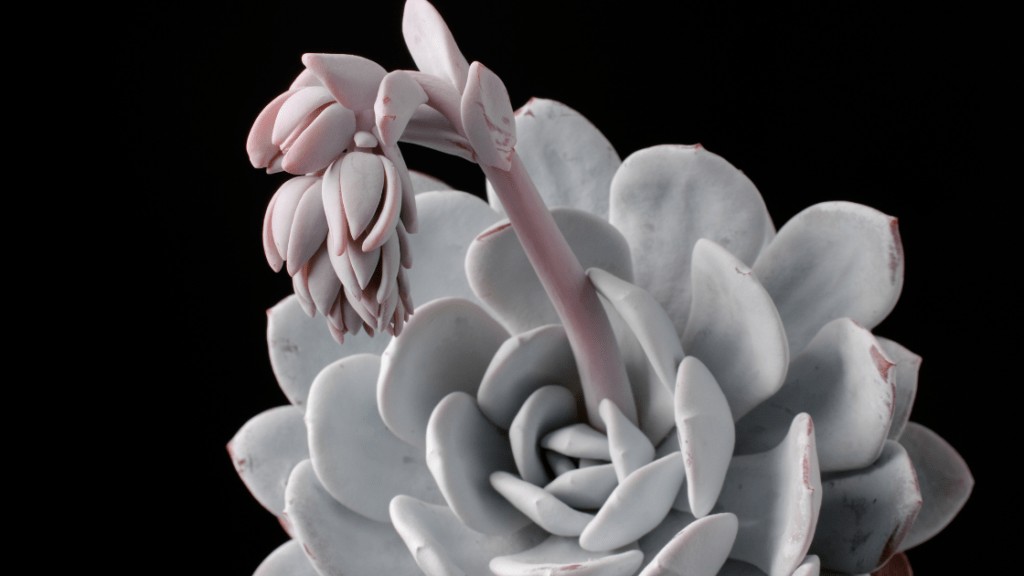
It’s usually best to let the succulent flower and not cut off the flower stem. Echeveria plants like to bloom constantly and preventing them from doing so will not really boost their leaf growth rate.
The most practical thing you can do when your Echeveria starts flowering is to wait for the flowers to open, pollinate them and collect some seeds. Starting new plants from the collected seeds is definitely one of the most interesting aspects of growing succulents.
Common Problems and Solutions
Echeveria isn’t prone to any genus-specific problems – if you water the plant correctly and give it sufficient light, it will usually stay disease-free, grow well and flower frequently. Here is a quick list of the most common issues you may encounter:
Over or Under-Watering
Both can lead to similar symptoms of leaf dehydration. If the root zone of the succulent is drowned in water for long periods of time, the roots become oxygen-deprived, root rot sets in and the plant can no longer transport enough water.
And of course, if you forget to water for long periods of time, the plant will also become dehydrated. Dehydration is easy to spot and starts with browning on the tips of the leaves, loss of color and wilting. Planting the succulent in unsuitable, compacted soil can also lead to those symptoms, regardless of the watering frequency.
The solution to watering problems is to simply correct the underlying problem and start watering the plant correctly – always let the top of the soil dry between each watering.
Heat Stress
Most succulents tolerate high temperatures, but Echeveria can sometimes have difficulties tolerating extreme heat. The plant is not native to dry, hot deserts and instead grows in very high elevations of up to 5,000 ft, where the temperatures stay around 70F.
The symptoms of heat stress are the same as the symptoms of dehydration – leaf spots, shrinking and wilting start to occur. The problem can be solved by getting the plant out of the direct sun and providing some shading and/or air circulation.
Pests
Pests are not commonly seen on Echeveria, but they are certainly a possibility. The plant has thick leaves which are a challenge for bugs to penetrate, but stressed plants may become vulnerable.
Insufficient light, which leads to the leaves not developing their characteristic pink-ish color may also increase the vulnerability of this succulent to pests. Mealybugs are most commonly seen and can be difficult to deal with, especially if you give them time to get established.
Fungus gnats and spider mites are other potential pests which can invade the plant. If that has happened to your plant, the only solution is to physically clean the bugs off with cotton swabs, wash the plant with soapy water and in difficult cases – apply a suitable insecticide.
Final Thoughts
Echeveria laui is a great choice for succulent lovers – although it’s a slow-growing succulent, it flowers very frequently throughout the year, which is not only spectacular, but makes it easy to collect seeds from the plant.
This succulent isn’t demanding and as long as you give it plenty of light, cooler temperatures and infrequent watering, you shouldn’t experience any problems. Echeveria is easy to propagate from leaf cuttings and from seeds, but it grows quite slowly, regardless of how much fertilization is provided. All that’s required for proper care during the winter is leaving the plant on a colder windowsill and watering even less frequently.


